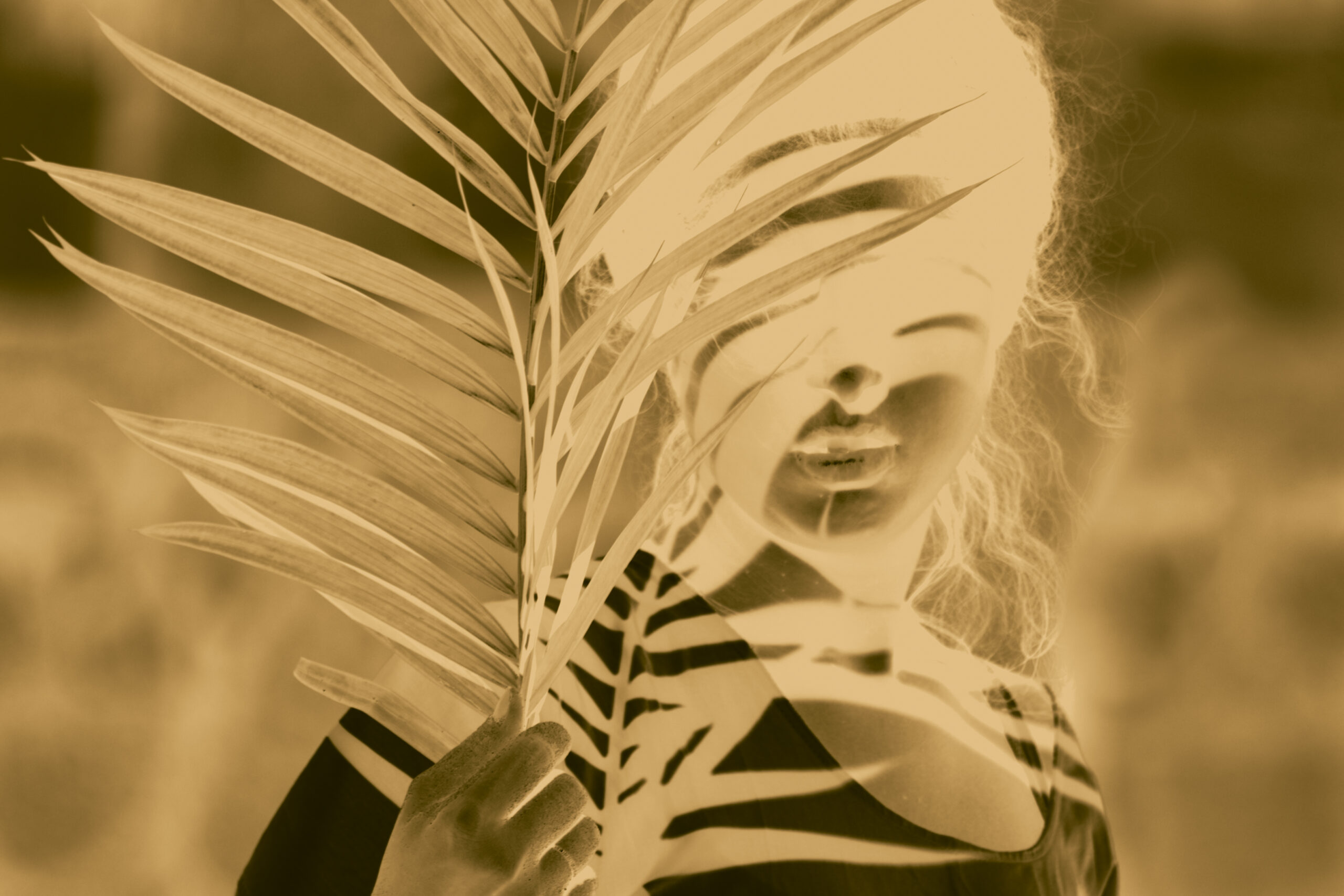
We are big supporters of female artists on our site and often share stories of women who are creating complex and interesting narratives through various art forms, whether it be illustration, physical exhibitions or performances, photography or other mediums. We have also learned through many of the women we have written about that the art world is not always so female-friendly, despite it being a creative industry that is not dependent on traditional gender norms like others.
So the way we see it, a female artist existing in the art world is a disruption in and of itself. One of the common threads we see weaved throughout many of the women’s work is the idea of exploring different narratives around female identity. New York based award-winning photographer and artist Bastienne Schmidt is one of those artists, whose work is exhibited in galleries around the country and books she publishes.
Her latest project is a profound look into the many definitions of female identity featured on hand-painted cut-outs that represent silhouettes of different types of women. In the ‘Typology of Women’ series, Bastienne is commenting on the way female identities are constructed in society, but not necessarily defined.
Writer Mimi Thompson composed an essay to accompany Bastienne’s work, titled ‘The Subversive Silhouette’ where she breaks down the process of creation of the series. Bastienne’s silhouettes refer to figures from ancient Greek ceramics, to Japanese wood cuts, fairy tales, and American pop culture. Mimi refers to feminist author Simone de Beauvoir’s book ‘The Second Sex’ and draws parallels with Bastienne’s work.

“At the start of her book ‘The Second Sex’, Simone de Beauvoir asks, “What is a woman?” This question begins a wide-ranging discussion of the female sex, and, by illuminating how competing ideologies sometimes join the same team in order to deny women their rights, she reveals the tendency of our culture to exalt women when convenient yet dismiss them when it’s not. De Beauvoir wrote this book in the late 1940’s, at a time when some baby nurseries tagged the bassinets of newborns with either “It’s a Girl!” or “I’m a Boy!”. Objectifying one sex and subjectifying the other, our culture set separate paths for each gender. We are still examining what it means to be a member of either sex, or a combination of the two. The wide range of qualities given to and expected from the female sex indicates its complexity and range of power, as well as the fear it can engender,” she writes.
The idea for ‘Typology’ came from her previous project, a photography series called ‘Home Stills’ where she photographed herself as a housewife in a range of different settings, challenging the idea of domestic bliss and domestic utopia by instead alluding to the complexities and escapist fantasies of the domestic housewife by placing her in situations where she could easily escape or take flight. Building on this idea of exploring the inner female narrative led to creating the conversations around female identity in ‘Typology of Women’. In anticipation of her upcoming shows in July and August, we had a chance to ask Bastienne more about her work and her own interesting story of being an internationally-raised world-recognized artist.

You have a very international background, tell us where you have lived around the world?
I was born in Germany and my family moved to Greece when I was nine. My father was working as an archeologist. I subsequently studied Fine Art and Photography in Italy and moved to the US about twenty years ago. Experiencing cultures from different viewpoints have shaped me as an artist in many ways
You are an award-winning multi-media artist who has had her work displayed all over the world. But the international art world is very gender-lopsided in terms of promoting women’s work, how have you managed to break through any barriers?
I have been an artist for twenty-five years. After finishing college, of course there is this vision, that my voice as an artist- who happens to be a woman- is being heard. After having been part of the art world for a long time, I realize that the process is not always a straight line. A lot of determination and love of the medium itself is helpful. I love the process of making art. The creative process for me is to leave a mark as a woman and an artist.

Your latest project is called the ‘Typology of Women’ which is also a book. First tell us about the exhibit, where it will be shown and what people can expect to see in person?
My project ‘Typology of Women’ started around 2006. A shift in perspective and identity occurred in my life after having kids. I looked a lot of history, history of art, pop culture and fairy tales to see how women were depicted and reframed. For me it’s a tool of empowerment to take a look at ourselves and say this is who we are and this is what we can do. Very often in history of art women were seen as the muses and not as acting figures in history.
The exhibition will be shown at the Ricco/Maresca Gallery in Chelsea from July 21st to August 19th. I would love to travel this exhibition to continue a dialogue. Especially in 2016 in terms of the pending elections and Hillary Clinton as a candidate there are many discussion that put to the forefront, the added scrutiny she faces as politician, which is a reminder that even now in America, in a modern Western democracy, we have not arrived yet at the point of a total equilibrium.

Many of the images on display are included in your book. Can you tell us why you chose to make this available in book form and the essays it includes?
A book is a beautiful object to tell a story and to carry it with you. A lot of times a book remains much longer a part of the public dialogue than an exhibition. I love the process of making books; ‘Typology of Women’ is my sixth book.
There are two essays in the book. One is the second chapter of ‘A Room of One’s Own’ by Virginia Woolf, where she recounts visiting the library and being amazed how many male ‘specialists’ on women there are. I read it as a reminder that we as women have to use our own voices.The other essay is by the art critic and writer Mimi Thompson who gives a wonderful historic overview of how women have been seen in history of time.
She writes in her essay. “Schmidt uses both cultural and collective memory to investigate the history of women’s roles. By presenting varied outlines of female shapes that recall Cycladic sculpture, Matisse cutouts and paper dolls, she creates a collection of uncertain identities that span centuries from ancient goddesses to contemporary athletes. As noted earlier, by replacing the flat black of the silhouette with a gestural orange, which often includes other figures and marks inside the outline, the viewer has a look into the inner life of the subject, perhaps at the private thoughts or history of this anonymous figure; the painting in the silhouettes, washes of glowing yellow and orange, flicker like small fires.”

What inspiration do you draw upon when deciding on the various female forms you include in your exhibit?
It’s a combination of studying and looking at images, but then also the process of cross pollinating all the information that I collect and playing with it in a very free way. I draw and doodle a lot and I am always surprised, what the subconscious comes up with.
Having grown up in a number of different countries and no doubt seeing a variety of female identities, how has this played a part in why you choose to focus on the physical embodiment of women in your work?
It is true, that having grown up in some countries that were in certain periods more traditional than others, gave me a particular viewpoint. I think that explains the love of typologies in my case. I love comparing systems. The history of silhouettes is a clearly visually an easy identifier of types. Going back to the aspect of depiction of women in history of art I am amazed and in awe how women have been perceived, mostly by men. It is true, that very often it is a reflection of a male gaze, and that’s exactly what I would like to change and mix up.
How are you challenging the status quo when it comes to the feminine identities laid out by mainstream society, and how does feminism play a part of your work?
The process of continually reminding ourselves and our community, which includes our sons and partners to be part of the dialogue, is important. I have long discussions with my fourteen year old son, and he understands that there is still a lot of catching up to do. It is important for our children to perceive us in a variety of roles, as a mothers, as an artists and a community members and the same is true for men. I see us as equal partners as artists and as parents.
======================================================================
To see more of Bastienne’s work you can visit her website, and if you are in New York over the summer be sure to check out the ‘Typology of Women’ exhibition at the Rico Maresca Gallery.

















